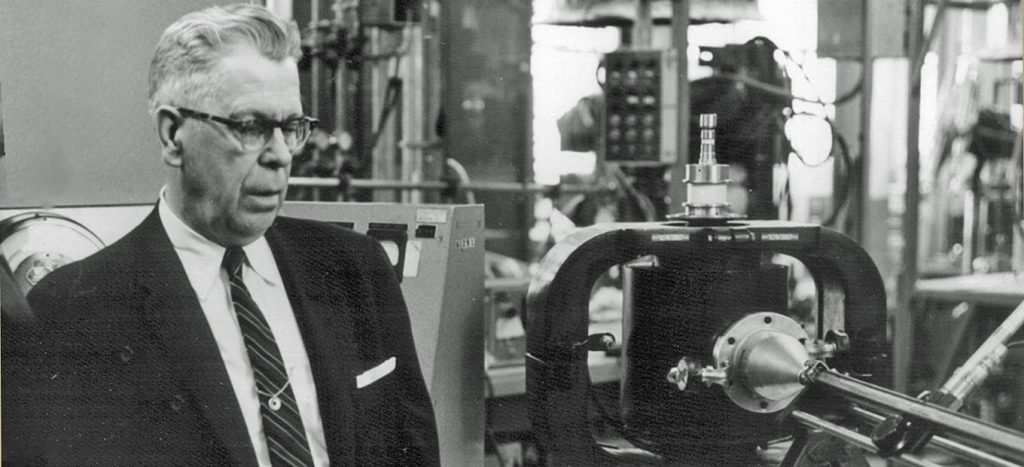
A microwave oven, also known as a microwave, is a common kitchen appliance which is used by most people to cook, warm, heat, reheat and defrost food fast and efficiently. When cooking, the microwave uses electromagnetic radiation which induces polar molecules to your food, cooking it evenly without driving away the flavor. To ensure that your food cooks quickly and efficiently, the microwave uses a process known as dielectric heating where your food rotates on the turntable, producing thermal energy which is responsible for the even heating. Wonderful you say so who is responsible for inventing the microwave oven, for this amazing product of convenience?
Who invented the microwave oven?
The microwave oven has become one of the commonly-used kitchen appliances in most modern homes. However, just a few people know how this important kitchen tool was invented.
Percy Spencer is the man behind the discovery of the microwave oven. Born on 19th July 1894 in Howland, USA, Spencer lost his father at the age of one year and six months. His mother was forced to send him to live under the care of his uncle and aunt soon after. At the age of seven, his uncle died, forcing young Spencer to drop out of his grammar school to start working.

From the ages of 12-16 years, Spencer was forced to work in a spool mill so that he could earn money to support him and his aged aunt. While he was working in the mill, rumors came about a paper mill company which was soon to begin its operation. The company used electricity to run its operations – something which intrigued Spencer. He was therefore forced to seek assistance from a remote community in Maine where he began learning about electricity and its phenomenon.
Despite having never received any formal training in electricity, Spencer was among the three people who were hired to work in the newly-established company. At the age of 18, Spencer decided to join the U.S. Navy to learn more about wireless communication and radio technology. In his research, he also learned more about calculus, trigonometry, physics, chemistry and metallurgy to understand more about wireless technology.
Percy Spencer’s Career
By 1939, Spencer had become an expert in radar tube design and was hired by Raytheon in the United States Department of Defense as a chief in the power tube division. While working in the institution, Spencer helped Raytheon win a government contract to develop high-tech combat radar equipment for M.I.T.’s Radiation Laboratory. This project became a major contribution to the United States Government and the WWII, as well as being behind the Manhattan Project. It also saw the magnetron production of the company rise from 17 per day to 2900 per day. Spencer’s staff also rose from 15 employees to 5000 employees.
One day while Spencer was working on the magnetrons, he noticed that a chocolate he had in his pocket suddenly melted while he was standing in front of an active radar. Although he was not the first person to notice this, he was the first person to investigate and discover that the magnetrons could be used to heat food. The experiment was conducted on popcorn kernels which bore positive results. Later on, Spencer moved on to create the first true microwave through attaching a high-density electromagnetic field generator to an enclosed metallic box. The magnetron and the metal box blocked any heat or waves from escaping, allowing a controlled heat circulation inside the box.
In 1947, the first microwave oven was commercially produced, weighing 750 pounds, with a height of 6 feet and a cost of $2000 to $3000. In 1967, more companies produced smaller units of microwave ovens with sleek designs and affordable prices ($495).
Among the accolades and achievements which were awarded to Spencer were an honor for Doctor of Science at the University of Massachusetts, a membership to the Institute of Radio Engineering and the Board of Directors at Raytheon, a building named after him in Raytheon, and he also received over 300 patents.
Which company invented the microwave?
Tappan Appliances is the company behind the invention of the first home-use microwave oven. Founded in 1881 by W.J. Tappan, the company which is based in Bellaire, Ohio, had been selling iron cast stoves door to door – a milestone which transformed their name from Eclipse Stove Company to Tappan Stove Company. Apart from inventing the first over-the-range microwave, the Tappan Company boasts other innovations such as the 1960s electric ignition for gas ranges, the 1965 single unit convectional range and the 1920s all-porcelain range.
In 1979, Tappan became part of Frigidaire and Electrolux, reorganizing its name in 1997 to Electrolux Home Products of North America. So now you know the company who invented the microwave oven.
The impact of the microwave oven on western homes
By the start of 1980s, technological advances led to a rapid fall of prices in most microwave ovens. Formerly found in large institutions, microwaves have gone ahead to gain recognition in most homes in western countries. By 1986, most homes in the United States were using microwaves; a milestone which was rated as a 25% increase compared to latter years.
In 1977, the United States Bureau of Labor Statistics revealed that over 90% of U.S. homes used microwaves in their kitchens. In 2008, Australian market research revealed that 95% of homes used microwaves while in Canada and France, 88% and 64% of kitchens used microwaves as well.
Conclusion
Although microwave ovens have gained a worldwide recognition in most homes due to their efficiency in heating, warming and defrosting a wide array of recipes, users should be very careful when handling these appliances to avoid any accidents. To ensure that you achieve the best results, use plastic containers and food wraps which are specifically designed to resist the radiation from the microwave. Some of the basic microwave symbols to look out for include three lines of waves (one above the other), as well as instruction manuals for proper microwave use.
As with a standard convection oven food spillages quickly mount up and get more difficult to remove the longer you leave them. So unless your new microwave has a special lining to reduce the amount of cleaning required make this a regular task.
Some hazards which come along with the microwave ovens include chemical exposure, direct microwave exposure and high temperatures which should be avoided through reading the manual carefully to avoid any errors. There are also a bunch of foods that you should never microwave
